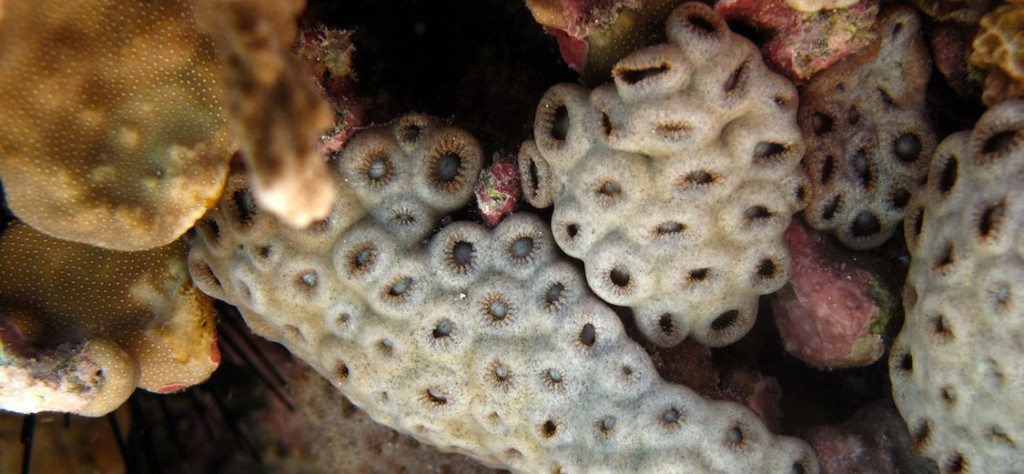Zoantharia is an order of anthozoans that, for the most part, look very similar to one another. Taxonomists are still trying to sort them all out. Many members of the suborder Brachycnemina could be missed due to their cryptic nature or simply because some are so scarce. We last reported on the discovery of a new brachycnemic zoantharian about a year and a half ago. Now, two more species have recently been described by researchers from the University of the Ryukyus, the Japan Agency for Marine Science and Technology and Tropical Biosphere Research Center.
Brachycnemic zoantharians occur in shallow waters in tropical and subtropical regions. Mainly zooxanthellate, they are common on coral reefs. At present, the suborder includes the three families Zoanthidae, Neozoanthidae and Sphenopidae. Only one genus of the family Sphenopidae, Palythoa, can be found in the Ryukyu Archipelago of southwestern Japan.
Sphenopus and Palythoa are the two genera of the family. Sphenopus is azooxanthellate and is solitary. It occupies soft-sediment substrates, typically without firmly attaching to a hard surface. Palythoa is typically colonial and zooxanthellate (like most other brachycnemic zoantharians). It lives firmly attached to hard reef surfaces. Recently, new members of the genus Palythoa have been discovered in the Ryukuyus. They are a bit unusual.
Because they look similar and were found in the same environment, the two species of zoantharians were at first believed to be one in the same; they were only determined to be distinct species after molecular analyses. The two new species, Palythoa mizigama sp. n. and P.umbrosa sp. n., are both azooxanthellate (very unusual for the genus), found living attached to the bottom and sides of caves and crevasses. They are believed to be nocturnal and planktivorous. They are further distinguished by a non-erect posture when closed.
Rather than helping to further sort out the mess that is Zoantharia, these findings throw into question the definitions of both Palythoa and Sphenopus. However, they also illustrate how complicated and diverse coral reef environments really are.
For more information about this study, please visit: http://zookeys.pensoft.net/articles.php?id=4598.











0 Comments